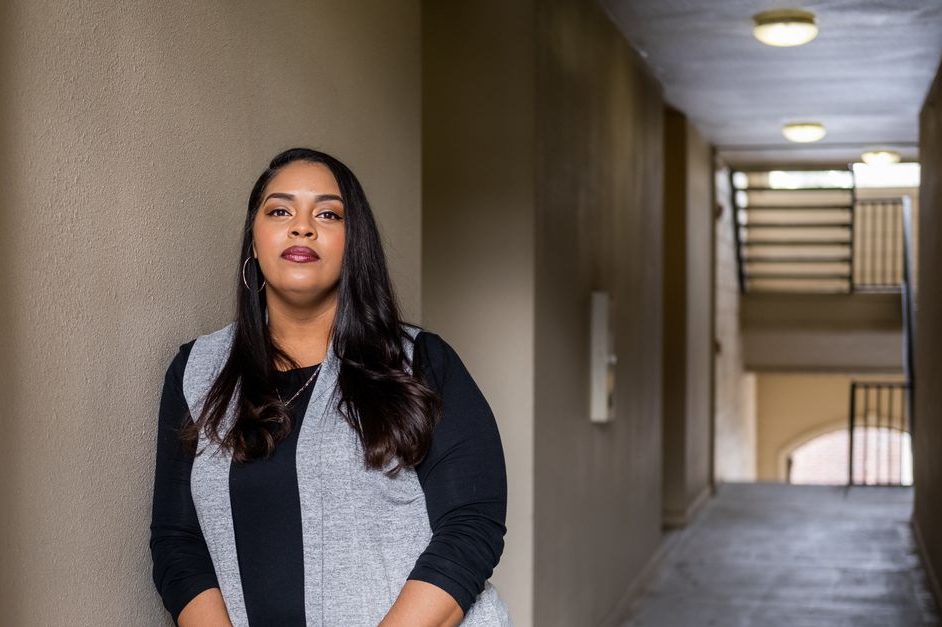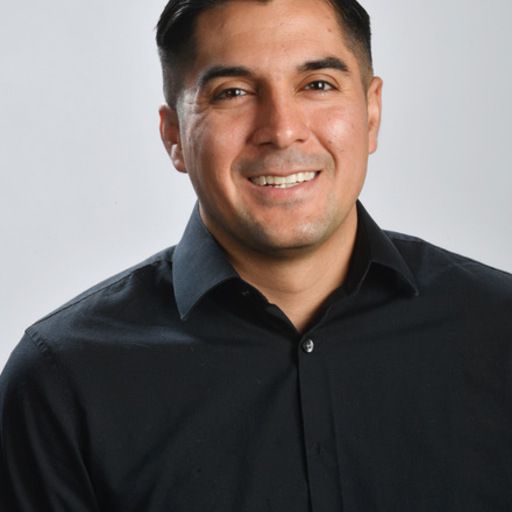
Victoria Browning felt trapped.
To support her two young children, she worked full time caring for elderly people, earning $14 an hour. Every week was a struggle.
So she enrolled at Concorde Career College Aurora Campus to get a shot at a better-paying job. Instead, she ended up with thousands of dollars in student debt and a job that paid the same as before.
Several years later, she tried again at the Community College of Aurora. That time, she did land a job with higher pay. But to graduate, she had to figure out how to negotiate inconvenient schedules and overcome barriers that derail many working students.
Browning’s college saga mirrors the struggles of many older Colorado students.
Training in Colorado can be hard to find, colleges don’t provide adequate support for students with jobs and families, and programs tailored to older students are limited. As a result, a wide swath of Coloradans can’t access well-paying jobs to provide for their families, and employers can’t find workers with the skills needed for specialized jobs.
Three-quarters of all Colorado jobs require education beyond high school. But only about half of the state’s adults have the necessary schooling.
The state’s master plan hopes to improve that picture, by equipping 66 percent of residents with a college degree or certificate by 2025 — but doesn’t spell out how to finance that. In fact, Colorado doesn’t track how much it spends on career training at colleges.
School leaders say there’s not enough money to meet state goals.
Without a concerted effort to educate an older demographic, the state won’t be able to meet the demands of employers. And with the state focusing most of its job-training efforts on high school students, adults, especially those who are low-income, must find their way on their own.
Plenty of options for older students. Few resources to find them.
Too many Coloradans can identify with Browning’s experience.
When she attended Concorde Career College, she didn’t know about the many less expensive options at the state’s public colleges. The private college had popped up first in a Google search, was close to her home, and made enrolling in its medical assistant program easy.
After Browning graduated, despite having earned A’s in her courses, she failed the test to earn her license. She didn’t feel prepared. Needing work, she took a job in a laboratory, again earning $14 an hour. She realized even retaking and passing the test wouldn’t open many doors.
“When I started looking at the numbers, there was no room for medical assistants to grow,” she said.

Now, at age 33, she said she is still in debt about $15,000 for that degree.
While community colleges are more affordable than private schools like the one Browning attended, public schools have few resources for marketing themselves.
The state directs most of its efforts to trying to attract high schoolers to college, said Joe Garcia, Colorado Community College System chancellor.
So when older students seek college options, they may find little information.
“We do need to be more focused on the working adult. I think we do it better than the four-year schools,” Garcia said, “but we don’t do it well enough.”
Finding a school isn’t intuitive, college leaders say. Many people also may not know what they need to do to enroll and graduate.
Dana Davis, a former high school counselor who now helps students at the Community College of Aurora, said many people believe that older students have it all figured out. After all, they have years of experience navigating various life situations.
“I think one of the main factors why we don’t have as many resources is we kind of just let adults do their own thing. We say, ‘You’re a student, you’re an adult’ and just believe that they know what they’re doing,” Davis said. “But many don’t know, especially a lot of them that are first-generation students.”
More education equals more opportunity for older students.
When Browning enrolled at the Community College of Aurora, she was looking for an education that would help pull her out of poverty.
She watched her parents, who are immigrants, struggle to make ends meet while working minimum-wage jobs. Browning knew more training meant higher pay. So no matter the obstacles, she was determined to graduate.
“I had kids,” Browning said. “I didn’t have any other option. I didn’t have an opportunity to say I could not do this. Like, what am I going to do? Am I going to be homeless or am I going to be on welfare forever?”
When she did graduate the second time, she got a job in health care at the University of Colorado Anschutz Medical Campus. The job initially paid 25 cents less than she had been making. There was, however, a chance to later earn more.
Since then, she’s been promoted multiple times, doubling her hourly wage.
Browning’s experience illustrates what national figures show: Weekly earnings increase with more education. The chances of becoming unemployed also drops.
As Colorado and the nation begin to recover from the coronavirus pandemic recession, many adults need training. About 95 percent of jobs created during the recovery from the Great Recession went to workers with at least some college.
Officials want to improve career training so that its success doesn’t depend so much on students’ fortitude.
Connecting more working adults to better training could lift up many Colorado families, said Michael Macklin, the Community College System associate vice chancellor for academic affairs and workforce development.
That’s especially true for those adults who make about minimum wage or who have recently lost jobs.
“For me, career training is really about trying to get people to a livable wage where someone is not just trying to meet basic needs,” Macklin said, “but where they are able to provide for a family comfortably.”
Serving Colorado adults is ‘not a collegewide effort’.
Most of Colorado’s career-training funds come from the federal government. The state also sends money directly to colleges which it can use for career-training programs.
Lawmakers have pledged support, but haven’t backed talk with significant investment, said Fiona Lytle, the community college system’s legislative liaison.
“The well wishes are there, but at the end of the day, it’s not getting done,” Lytle said.
The state received $19 million last year from Uncle Sam for job training, the most it’s seen in five years. About 60 percent goes to community colleges, and the new money from what are called Perkins grants presents an opportunity to bolster career training for working adults.
That bump in federal funding must support jobs ripe for growth and may create apprenticeships, said Sarah Heath, Colorado Community College System career and technical education director. That can include jobs in information technology and health care.
Additionally, colleges must strengthen partnerships with businesses.
Yet in a state where higher education funding ranks near the bottom of the country, operating budgets for community colleges can’t easily create programs or attract students to them. Many schools seek other grants, mostly from the federal government.
Browning benefitted from one such grant. In the last year, she decided to return to the Community College of Aurora. The school had alerted her about a chance to bolster her job skills.
She joined a supportive program that offered resources to help working students like Browning: gas vouchers, bus passes, and child care.
“All of these things were things I didn’t need this time,” Browning said. She would have “most definitely” used the benefits from the program her first time at the community college.
Jessica Cassarino, who oversaw the Strengthening Working Families Initiative at the Aurora college, said that colleges have only sporadically provided direct support to students.
Created with a U.S. Department of Labor grant, the program has offered grants that help provide child care, college counseling, and career support to almost 700 students at Aurora and the Community College of Denver, including Browning. In its last year, the program graduated over 93 percent of its participants.
But like many initiatives, it relied on a short-term grant. Despite its successful track record, the program expired.
As they seek other sources of funding, college officials feel that services for working adults still get overlooked, Cassarino said.
“It certainly doesn’t feel like a collegewide effort, not comparatively to the way colleges come together to attract high school students,” she said.
Training for older students is an economic imperative.
Advocates say that Colorado could do more.
Many Colorado campuses lack flexible schedules and career guidance, said Jane Oates, president of the group WorkingNation. The nonprofit works to address unemployment and create solutions for a changing economy.
“Many of them are still doing courses Tuesdays and Thursdays from 2 to 4,” Oates said, “That’s just not going to fit adult lifestyles.”
Still, Colorado has made some advancements in career training.
It has introduced job training into middle and high schools, studied its workforce talent pipeline, and identified key areas of job growth for workers, such as digital technology. The workforce talent study has led to apprenticeship programs for child care providers.
Other states offer examples of how to encourage training.
Washington state, for instance, has pioneered tax-advantaged savings accounts that employers can contribute to and can help pay for the education, training, and living expenses of workers including child care, books, and admission fees.
The savings accounts also allow adults already in the workforce to access career training whenever needed, Oates said. That is critical because employers require workers to be able to seamlessly get the training as jobs and technology advance.
Training advocates say that as the demand grows for skilled workers in various sectors, the state needs to vastly expand training opportunities.
With the number of high school graduates in Colorado projected to drop after 2026, community colleges will have more seats to fill and the state will struggle even more to meet demands for a skilled workforce.
The health care sector alone is expected to show significant job growth, fueled by simple demographics. By 2030, the number of residents 65 and older is expected to double to 1.3 million to become 20 percent of Colorado’s projected population, according to state data.
Programs across the state aren’t producing the trained workforce to meet demand, said Abbey Clothier, Centura Health manager of talent partnerships. That’s especially true in Denver and rural parts of the state.
“I would think that it would be increasingly more difficult to make sure that we have appropriate staff to provide patient care for our flourishing communities,” Clothier said.
Browning knows that an untapped group of Colorado working adults wanting to find opportunity could fill those roles in growing industries across the state.
But for many adults, it’s been years since they’ve set foot in a school, Browning said. It can look like a foreign place, and Browning said they need a guide. Programs focused on older students help create a pathway to success, she said.
“There are so many people who are struggling, who just moved here or didn’t have access to opportunities,” she said. “They didn’t have that support. And they need it.”
This story is the first in a two-part series produced as part of the Higher Education Media Fellowship at the Institute for Citizens & Scholars. The Fellowship supports new reporting into issues related to postsecondary career and technical education.
Chalkbeat is a nonprofit news site covering educational change in public schools.








